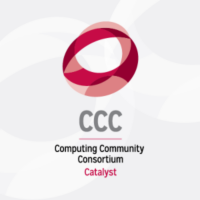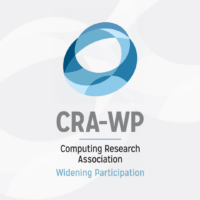Expanding the Pipeline: Hack Your Way to an Undergraduate Research Group
By Brian Harrington, University of Toronto Scarborough
Involving undergraduate students in research can improve their academic performance, raise their self-esteem, and make them more likely to consider graduate school. Starting an undergraduate research group, especially for a teaching-stream faculty, can feel like a daunting task that requires lots of time, energy, and money. But with a few simple hacks, you too can start up your own group and help your students on their way to careers in research.
The goal of this guide is to build a self-sustaining undergraduate research group where:
- You can provide basic exposure to research to as many students as possible
- Students will build their research skills as they progress
- The skills that the students develop will be of benefit to them whether or not they go to graduate school
- Everything is entirely ‘opt-in’, so that students progress based on effort, but never feel compelled to take on more than they can handle
- You can do the above on little to no budget, and without burning yourself out
We highlight a few key strategies.
Step 1: Weekly paper reading group
This is a cheap and easy way to get your group rolling. Once per week, choose a paper, distribute the pdf (tip: don’t send the doi, sending the pdf directly will save the students the hassle of struggling to access the paper), and a week later you meet to discuss and analyze. This gives students an easy opportunity to familiarize themselves with reading and discussing papers.
Ways to hack this step:
- Have the students present the papers: This provides students opportunities for public speaking and presenting practice and takes some of the burden off you. Depending on your size, they can present solo or in small groups.
- Choose papers you’d have to read anyway: If you keep the focus of the group similar to your own research, you can avoid having to spend time on papers just for the reading group. (mini-hack: hold a special session where you teach the students about peer review by helping me with your backlog of review papers).
- Let the students slack off: Aside from the students who are presenting that week, it doesn’t matter if the rest of the audience has deeply read and understood the paper. In fact, you can encourage first timers to not read the paper so they can just absorb the discussion. This also helps students not feel overwhelmed if they can’t keep up in a given week, or worse yet, to stop showing up because they miss a week or two.
- Slack off yourself: while you probably can’t get away without having read the paper at all, you don’t need to know every detail of the paper to help facilitate a group discussion. It’s not the end of the world if you’ve only had time to quickly skim the paper beforehand, especially if you’re choosing papers within your area of expertise, you can probably bluff your way through the occasional week
Step 2: Literature Mapping
Literature reviews require a deep understanding and analysis of papers. Literature maps, on the other hand, are simpler projects that let you leverage a group of people, and get students to read a lot of papers, but don’t require too much depth on any individual paper. In literature mapping, you simply categorize papers on a number of dimensions to produce multi-dimensional maps. So if you want to find all the papers that use a particular methodology on a particular population, or papers that evaluate a particular intervention using a particular analysis technique, you can find it. These maps are beneficial to the community, and require students to read the papers in a directed, guided fashion, looking for specific questions “Does this paper use interviews?”, or “Are the results reported by gender?”
Ways to hack this step:
- Make the literature mapping project a reward for delivering good quality presentations in the reading group. This will motivate students to put in the effort throughout the term and also guarantees that the students have at least the fundamental exposure to research necessary to read and assess the papers.
- Double-code everything: Each paper should be read and coded by at least two students separately, and their answers should be compared. It gives a sense of accountability, and an opportunity for discussion when it comes time to resolve discrepancies, and also lets you be reasonably certain that your maps show what you claim they do.
- Use shared spreadsheets: There are fancy tools out there, but a simple shared spreadsheet is easier to set up, and way less hassle to administer. We have made a template spreadsheet that facilitates all assignments and resolving coding discrepancies, along with some scripts to turn your output into pretty LaTeX tables and heat maps at https://github.com/BrianHarringtonUTSC/LiteratureMapping
- Make it what you can make it: Lit-mapping projects as a summer reading course, as a paid internship, or even as a `just for fun’ summer project. Obviously, the amount you can offer students in terms of money/course credit will dictate how much you can expect out of them (footnote: if you CAN afford to reimburse your students, please do), but these projects can go anywhere from a super serious research project that is marked and assessed, to a fun light activity where students drop in and out as time permits (just make sure you’re clear about the expectations with your students at the outset).
Step 3: Research Symposium
By the time students have completed a literature mapping project, they’re ready to start being helpful to full research projects. Establishing an annual undergraduate research symposium in the fall lets every student who did a summer project, or a summer reading course, or just did some cool project over the summer, have an opportunity to present their work in a (semi) formal setting.
Ways to hack this step:
- Use symposium submissions as end of term project deliverables: Students doing capstone courses, reading courses, or projects all probably have to be delivering some sort of end-of-project presentation/writeup anyway. Let them re-use that work for the symposium
- Accept (almost) everything: Just make students submit an abstract, and then accept them as long as the abstract shows that they have done a reasonable amount of work. As the symposium grows, you will likely need to be pickier in your acceptances, but by that point, you will hopefully have trained some students who can help you perform the reviews.
- Pad it out: if you’re worried that your group doesn’t have enough projects to support a symposium, have students present other projects they’ve done, allow students to represent stuff from the previous year, and fill out the schedule with some faculty talking about their own research.
- Keep it simple: your symposium doesn’t need to feel like a big international conference. You don’t need a complex schedule and peer review process. Most of the students won’t know what to expect, so whatever you can do is probably enough to give them a good experience
- Make it (feel) formal: even keeping it simple, you can do a few little things to make the symposium feel like a bigger deal. Printing up some nice looking posters, making a good looking submission form, and sending a formal sounding acceptance email, inviting someone to give a “keynote”, little things can make students feel like they’re getting a more “real” experience.
Step 4: Combine it all into one big funnel
The best part about this model is that it creates a natural funnel for students. As many students as you can fit in the rooms can attend reading group sessions, and even if all they do is just sit and listen, they still get some exposure to research. Then a small number who show up regularly and show that they’re attentive can be invited to present. Of the ones who show dedication in their presentation, you can invite some to literature mapping projects, and then those who excel in the projects can be invited to participate in full research projects and present at the symposium. At each stage, students can get more involved if they’re willing to put in the effort, or they can stop at any stage if they don’t feel they have the time or energy to move on to the next level.
Not only does this funnel naturally select for students who are going to have the time and dedication to proceed to the next stage, it teaches them the skills in a nicely scaffolded way, building up from listening, to discussing, to reading, to analyzing, to conducting research.
This is the model I used to build my own undergraduate research group on no budget, with minimal external support, and without drowning myself in extra work. Some of these steps may work for you, others may not. And you’ll probably find your own version that will work in your context. But the key is this: your activities and your group don’t need to be perfect. They can be messy and hacked together, as long as you’re helping and supporting your students, and giving them experiences they wouldn’t get otherwise.
The take-home message here is: Cut corners, take the easy route, use every hack available until you. Your first attempt won’t be perfect, it may even be a flop, but an imperfect flop is better than nothing at all. Keep pushing forward, making small improvements each year, and eventually, you too can hack your way to an undergraduate research group.
About the Author
Brian Harrington is a Professor, Teaching Stream at the University of Toronto Scarborough. His teaching focuses on introductory computer science for non majors and social topics courses developing research, writing, and presentation skills. Since 2017, he has focused on CS education with an emphasis on involving undergraduate student in research. His undergraduate research team has published over 20 papers with more than 50 student co-authors, many of whom have gone on to top graduate programs. He holds his MSc and DPhil from Oxford University.









